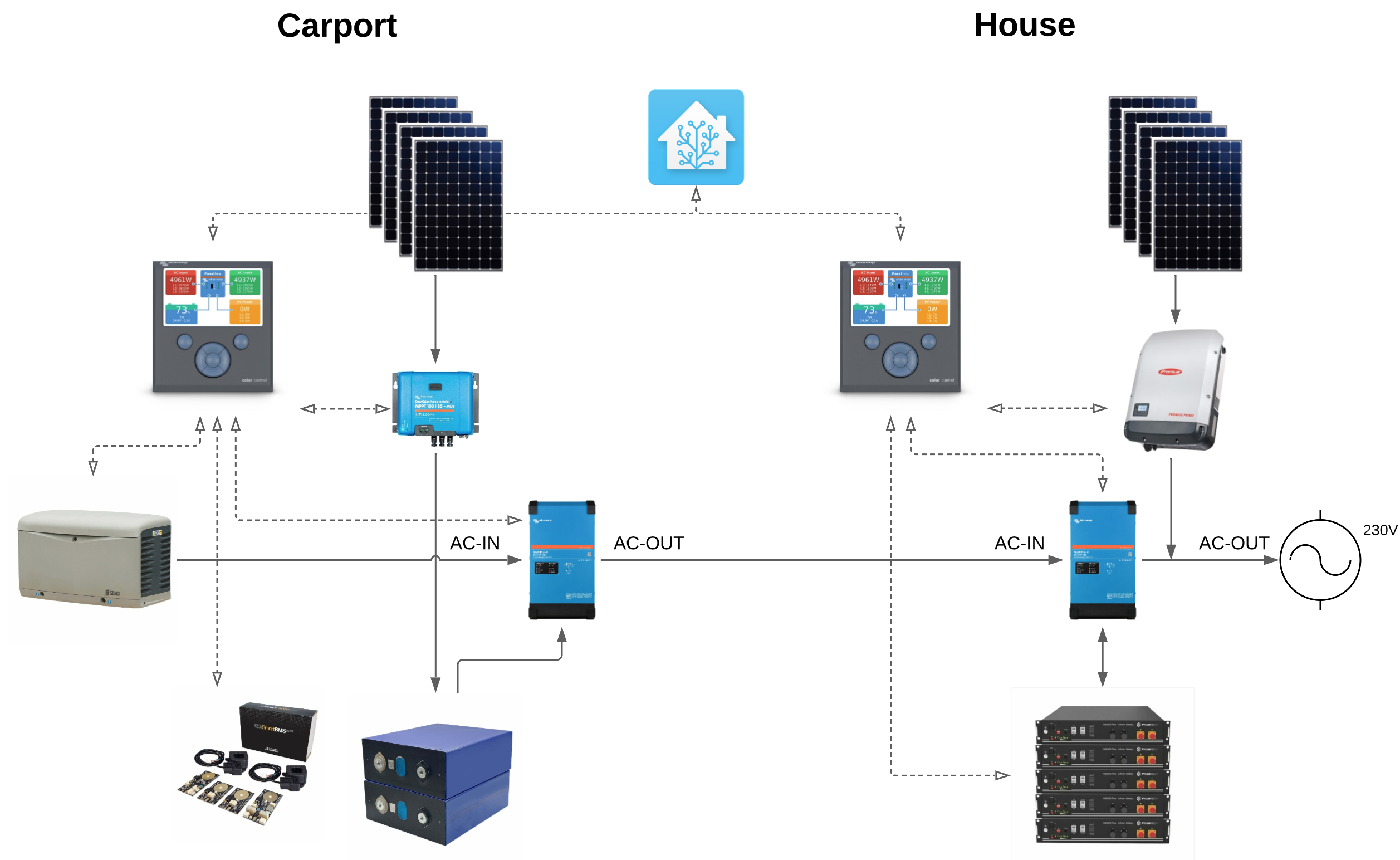I have an off-grid 15KVA installation that is working flawlessly for more than 2 years and am now going to do a [planned] upgrade. Below a simplified schematic of the set-up: 40x405W panels in 4 strings of 10 connected to 2 Fronius 8kW grid-inverters, followed by 3 parallel Multiplus II 5000, 42kWh Pylontech battery bank and a backup Kohler generator. The whole thing controlled by a CCGX and Home Assistant. This system is installed in the main house.

This set-up works well but I had prepared the option to upgrade it if with 2 year's worth real experience I noticed I'd call too often on the generator or for any other reason. I've now decided to do the upgrade and whereas I have a clear target architecture in mind I'd like to turn to this forum for any issues I may have overlooked, improvement opportunities, or any other inputs.
The upgrade or extension is going to be a second Multiplus II based system located in the carport. The basic concept is that the new system will replace the generator at AC-IN of the existing system, and will have the generator connected at its AC-IN in turn. Below a simplified diagram of the target solution.

Both systems are connected by 50mm2 cable which at 50A will give me less than 1% voltage drop at 230V, acceptable.
Because I already have the proven and trustworthy existing system I plan on going more DYI with the new one and go for EVE prismatic cells with 123BMS which is one of the 2 BMSes known to work well with Victron. On the charge controller and inverter I want to stick to Victron because of compatibility, easy of use, quality, you name it.
I will have 2 Multiplus II pushing out a maximum of 10KVA but above all, capable of accepting up to 8kW from the generator as their maximum CC charge current is 70A each. The panels will be connected to MMPTs so I solve the potential blackout issue with the current AC-connected only set-up. The whole managed by a second CCGX or Cerbo and HA on top.
The existing House set-up with 15KVA output is enough for all the loads so I don't need the new Multipluses to assist or increase grid capacity.
The control idea for this set-up is the following:
- Configure the new system as a generator in the house CCGX and use the generator start/stop assistant to turn it on/off exactly as I do today, based on SOC. AC-IN current limit would be 42A as I have today keeping the power transfer under 10KVA.
- Connect and configure the generator to the new system and use the generator start/stop assistant to turn it on/off based on SOC. Current limit also 42A to respect the sum of the Multipluses CC maximum charging current of 70A each.
This configuration has the advantage of creating 2 totally independent systems which greatly increases the resiliency of my off-grid installation.
I cannot easily merge the 2 battery banks into a single one because of the logistics and distance between house and carport. I thought about it as an option but it would require moving the existing House Multipluses and batteries to the carport which I don't want to do because "if it ain't broke, don't fix it". It would only save me the cost of the 2 new Multipluses which would be more than negatively offset but the extra cost of the Pylontech batteries I would have to use, instead of the EVE, to extend the now single bank.
Questions:
- Are there any major issues I'm overlooking?
- Is there a better architecture considering the situation?
- Is there a better control logic?
Thanks in advance for any comments, remarks or pointers.
